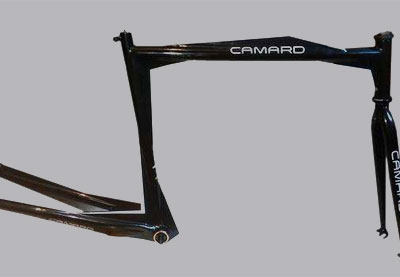
- Afrikaans
- Albanian
- Amharic
- Arabic
- Armenian
- Azerbaijani
- Basque
- Belarusian
- Bengali
- Bosnian
- Bulgarian
- Catalan
- Cebuano
- Corsican
- Croatian
- Czech
- Danish
- Dutch
- English
- Esperanto
- Estonian
- Finnish
- French
- Frisian
- Galician
- Georgian
- German
- Greek
- Gujarati
- Haitian Creole
- hausa
- hawaiian
- Hebrew
- Hindi
- Miao
- Hungarian
- Icelandic
- igbo
- Indonesian
- irish
- Italian
- Japanese
- Javanese
- Kannada
- kazakh
- Khmer
- Rwandese
- Korean
- Kurdish
- Kyrgyz
- Lao
- Latin
- Latvian
- Lithuanian
- Luxembourgish
- Macedonian
- Malgashi
- Malay
- Malayalam
- Maltese
- Maori
- Marathi
- Mongolian
- Myanmar
- Nepali
- Norwegian
- Norwegian
- Occitan
- Pashto
- Persian
- Polish
- Portuguese
- Punjabi
- Romanian
- Russian
- Samoan
- Scottish Gaelic
- Serbian
- Sesotho
- Shona
- Sindhi
- Sinhala
- Slovak
- Slovenian
- Somali
- Spanish
- Sundanese
- Swahili
- Swedish
- Tagalog
- Tajik
- Tamil
- Tatar
- Telugu
- Thai
- Turkish
- Turkmen
- Ukrainian
- Urdu
- Uighur
- Uzbek
- Vietnamese
- Welsh
- Bantu
- Yiddish
- Yoruba
- Zulu
Sep . 09, 2024 03:57 Back to list
types of mountain bikes
Types of Mountain Bikes
Mountain biking is one of the most exhilarating outdoor activities, allowing riders to explore rugged terrains and experience the great outdoors. However, having the right type of mountain bike is essential for maximizing your experience and ensuring safety. Here are the primary types of mountain bikes, each designed for specific needs and terrains.
1. Cross-Country Bikes (XC Bikes) Cross-country bikes are designed for speed and efficiency on varied terrain, primarily for riding on trails that are not overly technical. These bikes are lightweight, equipped with narrow tires, and have a more upright geometry, which allows riders to cover long distances comfortably. They usually have a suspension travel of around 80-120mm, making them ideal for climbing hills and handling moderate descents.
2. Trail Bikes Trail bikes are versatile and capable of handling a wide range of terrains, making them a popular choice among mountain biking enthusiasts. With a suspension travel of about 120-150mm, they offer a balance between climbing ability and downhill performance. The geometry allows for better maneuverability, making them suitable for both climbing and descending technical trails, which is why many riders consider them the all-rounders of mountain bikes.
types of mountain bikes

3. All-Mountain Bikes All-mountain bikes are built for aggressive riders who need a robust bike to tackle steep, challenging descents and rough terrain. With suspension travel ranging from 140-180mm, these bikes can absorb shocks on rugged trails, providing stability and control. All-mountain bikes are designed for downhill performance while still being efficient enough to pedal uphill, making them versatile for various mountain biking adventures.
4. Enduro Bikes Enduro bikes are a combination of downhill and trail bikes, designed for serious downhill performance while still being capable of climbing efficiently. With longer suspension travel (generally between 150-180mm), these bikes can navigate through rough terrains and steep descents. Enduro racing typically consists of timed downhill sections and untimed climbs, emphasizing the bike's ability to handle demanding trails.
5. Fat Bikes Fat bikes feature extra-wide tires, which provide enhanced stability and traction on soft terrains, such as snow and sand. Their low-pressure tires allow for better floatation, making them ideal for winter riding or traversing loose surfaces. Although heavier than other mountain bike types, fat bikes offer a unique riding experience across various conditions.
In conclusion, understanding the differences between these types of mountain bikes can significantly enhance your riding experience. Whether you are looking for speed, versatility, or the ability to tackle challenging trails, there is a mountain bike designed just for you. Choose wisely based on your riding style and the terrain you intend to explore!
-
The Ultimate Kids' Four-Wheeler Experience
NewsJul.09,2025
-
The Ultimate Guide to Mountain Bikes: Gear Up for Your Ride
NewsJul.09,2025
-
The New Age of Cycling: Electric Bikes for Every Rider
NewsJul.09,2025
-
The Best Kids Bicycles: Ride in Style and Safety
NewsJul.09,2025
-
The Best 3-Wheel Scooters for Kids: Fun, Safety, and Adventure
NewsJul.09,2025
-
Revolutionize Your Ride: Affordable Electric Bikes
NewsJul.09,2025
-
Finding the Perfect Mountain Bike for Every Rider
NewsJul.09,2025



